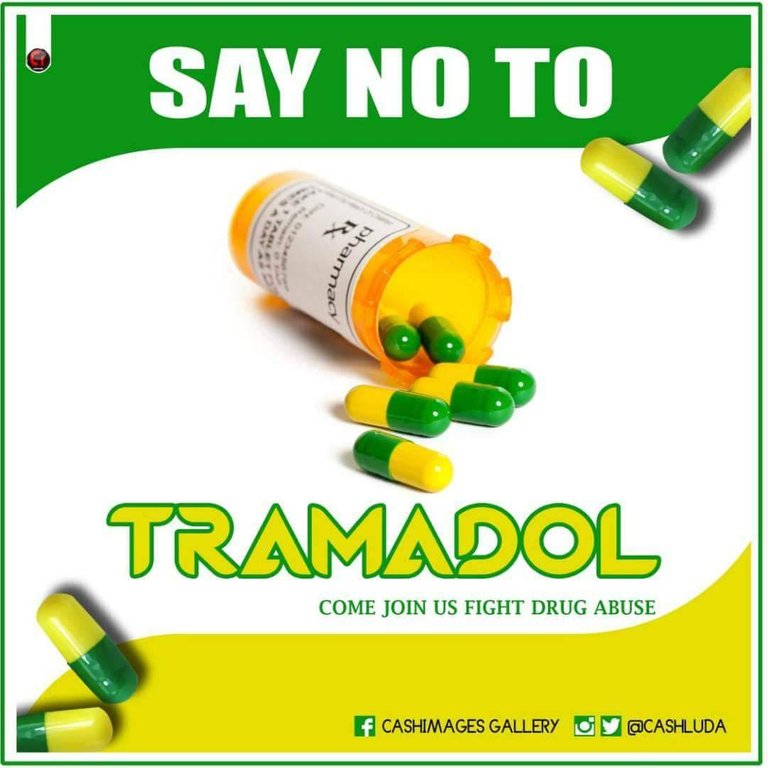 Tramadol is a synthetic opioid analgesic (painkiller) that is frequently prescribed to manage moderate to severe levels of pain eg pain after surgery or in chronic conditions like arthritis. It is commonly marketed under one of its brand names, Ultram.
Tramadol is a synthetic opioid analgesic (painkiller) that is frequently prescribed to manage moderate to severe levels of pain eg pain after surgery or in chronic conditions like arthritis. It is commonly marketed under one of its brand names, Ultram.
TRAMADOL,class of pain drugs called opiate narcotic analgesics, which work by changing how your body feels and the way your brain responds to pain.
First, like heroin, codeine, and all other opiate analgesics, tramadol binds to opioid receptors in the brain and spinal cord. These receptors are responsible for both the pain-relieving effects that patients need and, at higher doses, the euphoric effects that abusers seek.
Because tramadol is much less potent than other commonly abused narcotics when it is injected, it was thought to be a safe alternative to other painkillers like morphine. However, when taken by mouth, tramadol is converted into another compound called O-desmethyltramadol, which is a much more potent activator of opioid receptors than tramadol itself. As a result, users may get high on tramadol, even if that was not their intention when they first started taking the drug.
The second important mechanism of tramadol is that it raises the brain levels of the neurotransmitters serotonin and norepinephrine, similar to antidepressant drugs like venlafaxine (Effexor), and fluxetine . Ultram’s effects on serotonin and norepinephrine signaling in the brain is thought to be partially responsible for the drug’s ability to reduce depressive and obsessive-compulsive symptoms in patients taking it. These effects on mood may cause some people to take tramadol in larger doses and more often than prescribed, putting them on a path to dependence.

Short Term Effects
1.Elated Mood
2.Reduction in Anxiety
3.Lack of Pain
LONG Term Effects
1.Physical dependence: Along with tolerance, many users experience physical dependence if they use tramadol for a long period of time. Their bodies adapt to the presence of the drug, and soon require tramadol in order to function properly. If a dependent individual stops taking tramadol, they may become physically ill due to the onset of a withdrawal syndrome.
2.Tolerance: As tramadol works by changing a person's brain chemistry, there is a risk of developing tolerance to this drug. As the body adapts to tramadol's presence, users need larger doses of the drug to feel its painkilling and euphoric effects.
3.Cognitive decline: Many opioid drugs are associated with cognitive impairment and slowed reaction times. Complex tasks may become more difficult with long-term use of tramadol, and users may present a danger to themselves or others when driving.
This drug – while somewhat atypical with its activity as an opioid – still elicits its narcotic properties via the brain's opioid receptors. Similar to other drugs in this class of substances, some people may be at risk for addiction if they Use it for
- a long period of time.Take larger doses than recommended.
2.Take it more frequently than has been prescribed.
3.Take it for non-medical purposes.
4.Take it concurrently with other substances, such as alcohol, sedatives or other painkillers.
Good pain management practice dictates that the dose of Ultram be individualized according to patient need using the lowest beneficial dose. Ultram may interact with other drugs including monoamine oxidase inhibitors (MAOIs) and other antidepressant medications
Addiction is characterized by:
Compulsive drug seeking behavior.An inability to limit use on one's own.Difficulty functioning without the drug.
serious side effects
spinning sensation,hallucinations,fever,fast heart rate,overactive reflexes,nausea,vomiting,upset stomach,diarrhea,constipation,loss of coordination,headache,drowsiness, fainting.
agitation, , fainting;seizure (convulsions);a red, blistering, peeling skin rash.Dry mouth. Difficulty falling asleep.
Loss of appetite.Sweating.Tremulousness.
Effects of withdrawal from tramadol overlap with both opiate and anti-depressant withdrawal syndromes and include:
Gastrointestinal pain.Depression.Agitation.Diarrhea.Numbness in the extremities.Ringing in the ears.Hallucinations.Paranoia. confusion
Many people experience flu-like symptoms such as vomiting and nausea while withdrawing from tramadol. You may also experience tingling in your hands and feet.
The side effects of tolerance and dependence may ultimately lead to a tramadol addiction. Like other kinds of prescription drug abuse, many individuals struggling with an addiction.
Tolerance to the effects of tramadol can develop quite early. At the point that tolerance has occurred, dependency is close to follow.
#Enam
wow, i really went out of drugs and thanks to you now i know what to try next
you are a life saver
Waaaw a very informative post, youth especially in Ghana are over abusing this drug and as a result has caused so many harm to them.
Nice piece, keep it up.